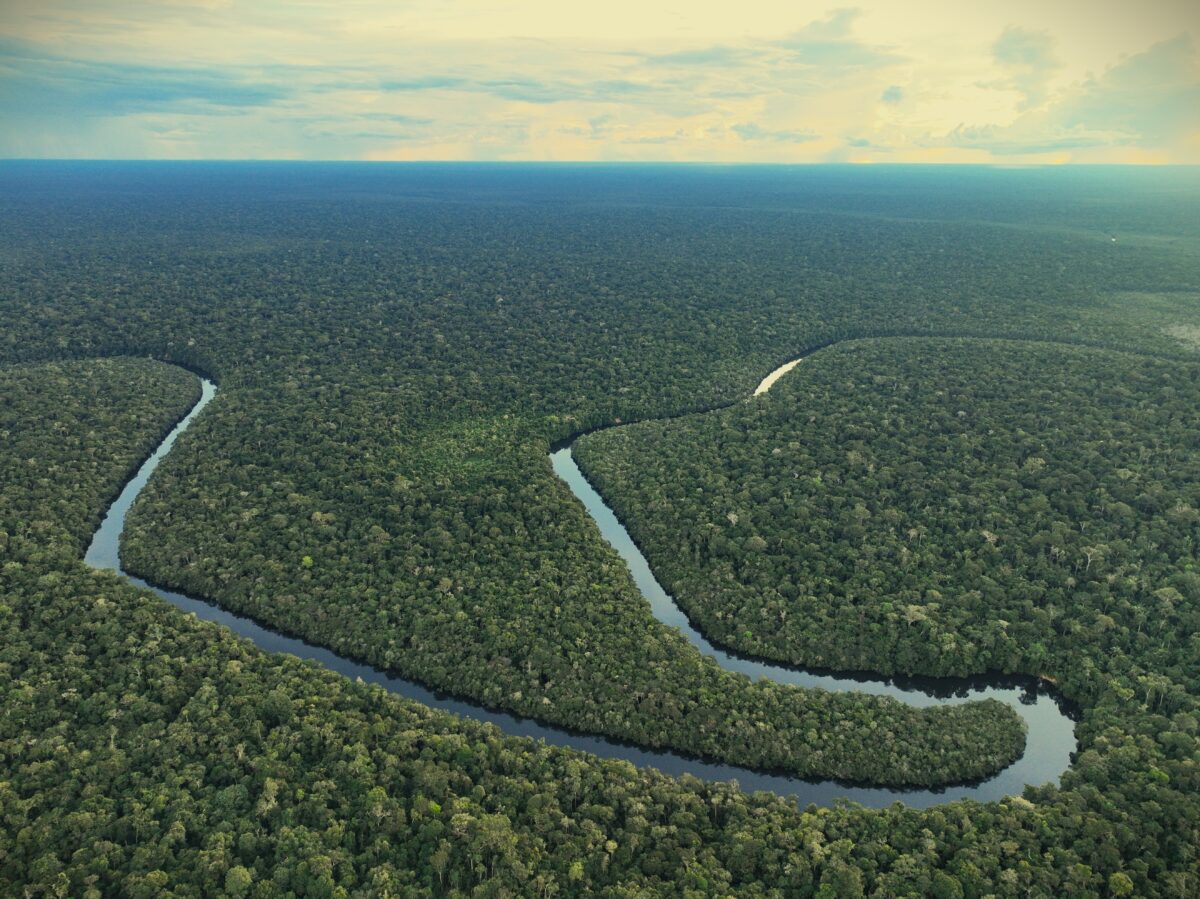The Tabajara Hydroelectric Power Plant (HPP) project will create a 60-square-mile reservoir in Machadinho d’Oeste. In addition to nine indigenous territories, an exclusive joint analysis by InfoAmazonia and Brasil de Fato confirms the influence of the project on seven areas where evidence of uncontacted indigenous groups has been found.
In spite of court decisions and reports of violations, the Tabajara Hydroelectric Power Plant (HPP) project still stands. It includes a 60-square-mile reservoir on the Machado River, in Machadinho d’Oeste, Rondônia, which, according to exclusive joint analysis by InfoAmazonia and Brasil de Fato, will affect seven areas where evidence of uncontacted indigenous groups has been found.
These uncontacted indigenous people are:
- The Piripkura from the Piripkura Indigenous Territory (IT);
- The Kaidjuwa from the Tenharim Marmelos IT;
- Indigenous people from Cachoeira do Remo;
- Indigenous people from Igarapé Preto – evidence was found at the Tenharim do Igarapé Preto IT;
- Indigenous people from Serra da Providência in the Igarapé Lourdes IT;
- Indigenous people from the Maici River in the Pirahã IT;
- Indigenous people from Manicorezinho in the Aripuanã National Forest Conservation Unit (CU).
Of these, only the Piripkura had the evidence of their presence confirmed: Confirmed evidence are indications of indigenous groups in isolation whose existence has been proven by the Brazilian State after systematic location work. Confirmation of presence is conducted by the CGIIRC using a thorough methodology, which can combine expeditions and overflights with the analysis of satellite images to identify areas traditionally occupied by uncontacted indigenous peoples. by the National Indigenous People Foundation (Funai) and, therefore, their circulation area is now protected by land use restrictions: An administrative measure used by Funai to protect isolated peoples while they await effective demarcation of their territory.. The Piripkura IT is located in an area of agribusiness activity, between the municipalities of Colniza and Rondolândia, Mato Grosso state, and is inhabited by two indigenous people in voluntary isolation, considered the last representatives of the Piripkura. Since the territory has not been officially demarcated yet, the land use restriction order established in March 2023 by Funai is an instrument to protect the Piripkura from contact with non-indigenous people.
Funai is conducting studies: Several pieces of evidence indicate the presence of an uncontacted indigenous people, although the information collected does not allow the indigenous affairs agency to confirm its existence or precise location. Confirming evidence under study requires continued location and monitoring work, based on systematized documents on sightings and signs as well as ethnological or historiographical studies on the uncontacted indigenous people whose evidence is found. about the Kaidjuwa, and the evidence of their presence remains unconfirmed even though they will suffer most of the impacts of the construction of the dam due to the project’s proximity – around 650 feet – to the Tenharim Marmelos IT, according to this analysis. There is evidence of the presence: Evidence of presence are pieces of information about the presence of an uncontacted indigenous people that are officially recognized by Funai. After an initial assessment for selection and screening, the agency incorporates them into its database for subsequent qualification. This evidence is usually collected by the Ethno-Environmental Protection Fronts (EPF) during location and monitoring work, as well as from indigenous and indigenous advocate organizations operating in Indigenous Territories. of the other five uncontacted groups.
From the beginning, the Environmental Impact Assessment (EIA): Document that must provide all the information for the establishment of a large-scale project. It is a complex study in which the company will indicate potential risks: populations that may be affected; animal and plant species existing in the area, as well as other physical and biological factors. for the Tabajara dam placed the Tenharim Marmelos IT within the project’s area of influence. However, the region is also close to other ITs and is full of signs of uncontacted indigenous peoples. To show whether the dam would affect these groups, we compared the database of the Observatory of Uncontacted Indigenous Peoples (OPI) — which monitors information about threats and pressure on these groups – with impact delimitated according to court-ordered measures.
For references to Uncontacted indigenous people living in ITs and CUs, the OPI adopts a 25-mile limit around the territory – the same limit provided for in Interministerial Ordinance 60/2015, which establishes areas of influence of dams and roads in the region known as Legal Amazon. Based on this measure, Funai must indicate to the National Institute of the Environment and Renewable Natural Resources (Ibama) which indigenous territories will be impacted and therefore must be studied. For Uncontacted groups outside protected areas such as the case of Cachoeira do Remo, with territorial boundaries that are not formally defined, the limit is 31 miles from the reference piece of evidence, for exclusive monitoring purposes.
Recognition of uncontacted peoples by Funai
Funai officially has 114 pieces of evidence of the presence of uncontacted indigenous groups in Brazil. Evidence about twenty-eight of these groups has been confirmed while the others are being investigated by the General Coordination of Uncontacted and Recently Contacted Indigenous People (CGIIRC) through the work of 11 Ethno-Environmental Protection Fronts (EPF), with 29 bases spread across the country. As decentralized units of the CGIIRC, EPFs are responsible for actions to locate, monitor, protect and surveil and, in exceptional contexts, establish contact with those peoples.
The studies to confirm evidence of presence can last for decades in order to produce knowledge about the dynamics of mobility and territoriality, ways of life, recent history and ethnic-linguistic belonging of the indigenous peoples involved. The most recent confirmation of evidence of uncontacted peoples took place in September 2021 in the municipality of Lábrea, Amazonas.
After a series of reports, expert opinions and complaints about the dam (read more in ‘Impact study rejected’), two court decisions are the basis for this analysis:
- In 2022: the Federal Prosecution Service (MPF) and the Rondônia State Prosecution Service (MPE-RO) filed a public civil action and, based on it, a Federal Court ordered the inclusion of seven indigenous territories in the dam’s impact assessment reports, in addition to Tenharim Marmelos. They are: Jiahui and Pirahã (both with recently contacted peoples); Tenharim Rio Sepoti; Tenharim do Igarapé Preto; and Ipixuna and Nove de Janeiro, where the Parintintim people live; and Igarapé Lourdes, home to the Arara and Gavião.
- In 2023: a Federal Court examined the matter again and ordered new environmental impact assessment reports covering the eight territories (Tenharim Marmelos + the seven new ones covered by the 2022 court decision). Integrated impact assessment should be conducted by Funai in the southern part of the Tenharim Marmelos IT, due to signs of the presence of uncontacted indigenous peoples – the area is approximately 650 feet away from the reservoir.
While there is no new progress on the licensing procedure, we compared the location of these territories to the impacts already predicted both by court decisions and by the OPI. In addition to eight indigenous territories identified in the 2022 court decision and in a 2023 request for their inclusion in studies – with emphasis on the strong impact on the Tenharim Marmelos IT and Kaidjuwa indigenous groups – the analysis also points to an impact on the Piripkura IT, which was not considered by the project’s assessments or court decisions.
According to the Indigenous Peoples of Brazil database from the Socio-Environmental Institute (ISA), an estimated 3,000 individuals from the Tenharim, Jiahui, Arara, Gavião, Parintintim, Pirahã and Piripkura indigenous groups live in the nine ITs identified in the project’s area of influence.
Uncontacted peoples in the region
Based on court decisions and also on the progress of the dam’s project, Marcela Menezes, a member of the management of the Indigenous Peoples Program at the International Institute of Brazilian Studies (IIEB), stresses the importance of resuming Funai’s studies on the presence of the Kaidjuwa – uncontacted people living at the Tenharim Marmelos IT.
“The Tenharim have reported the presence of these groups, and we know that a project such as a dam is something big for an uncontacted indigenous people and could even cause their extinction due to lack of control resulting from disorderly occupation of the area,” said Menezes.
The Kagwahiva’s territories, which are close to conservation units, form a mosaic of protection in southern Amazonas against the advancing agricultural frontier coming from Rondônia, as well as mining and logging in protected areas. Anthropologist Karen Shitatori points out that these illegal activities make the existence and safety of uncontacted indigenous people difficult. “They are being displaced. They’ve been escaping their whole lives in this area, and that’s why the Tenharim feel anguish and fear for not knowing if those people will have a future.”
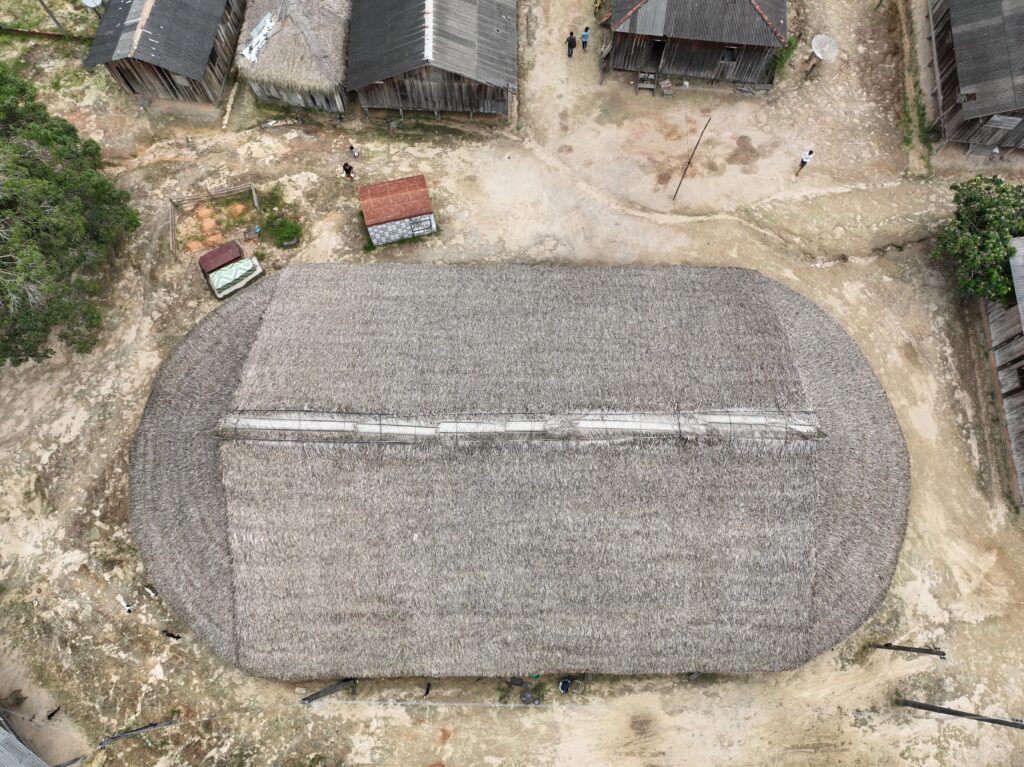
“We don’t know how many peoples are in danger. How are they? We don’t know if they are alive or dead, if they have been displaced further inland,” warns Ivaneide Bandeira Cardoso, known as Neidinha Suruí, founder of the Kanindé ethno-environmental defense association based in Porto Velho, Rondônia.
As a result of the protection program for these populations during the administration of former President Jair Bolsonaro (PL), she sees surveying the situation of uncontacted peoples in the region as “priority zero” within the Tabajara licensing process, and she calls on the current administration to fulfill its commitment to the indigenous agenda and the climate crisis. “None of that will be achieved with the Tabajara dam. Building the dam means promoting genocide of the uncontacted indigenous peoples in that region. That’s very clear to me.”
None of that will be achieved with the Tabajara dam. Building the dam means promoting genocide of the uncontacted indigenous peoples in that region. That’s very clear to me.
Neidinha Suruí, founder of the Kanindé ethno-environmental defense association
Ancient and uncertain history
This year, organizations of indigenous people and riverine communities resumed their mobilization to oppose the dam. In March, the Movement of People Affected by Dams (MAB) asked Ibama to reject the project’s license application. The Madeira Vivo Institute monitors dam projects for the Madeira river basin, to which the Machado river flows. In January, together with other organizations, they met with Ministry of Mines and Energy officials to ask for the plant project to be shelved: “Politicians still want it, and they have been putting pressure on Ibama to resume this debate,” says Iremar Antonio Ferreira, a member and founder of the institute.
The debate in question has been going on for 17 years. The Tabajara dam project was created in 2007, during the second administration of President Lula (PT). The following companies are responsible for it: Construtora Queiroz Galvão S.A., Furnas, Eletronorte, PCE Projetos e Consultorias de Engenharia Ltda and JPG Consultoria e Participações Ltda.
In 2008, the licensing procedure was interrupted by the Chico Mendes Institute for Biodiversity Conservation (ICMBio) due to impacts on the Campos Amazônicos National Park (Amazonas and Rondônia), the Jaru Biodiversity Reserve (Rondônia) and the Tenharim Marmelos IT. In 2010, President Lula included the Tabajara dam among the projects planned in the Growth Acceleration Program (PAC). In 2011, as a way to make the project viable, the administration of former President Dilma Rousseff (PT) introduced executive order 542/2011, which changed the boundaries of the Campos Amazônicos National Park – in 2012, the executive order was converted into Law 12678/2012 and the licensing procedure was resumed by Ibama.
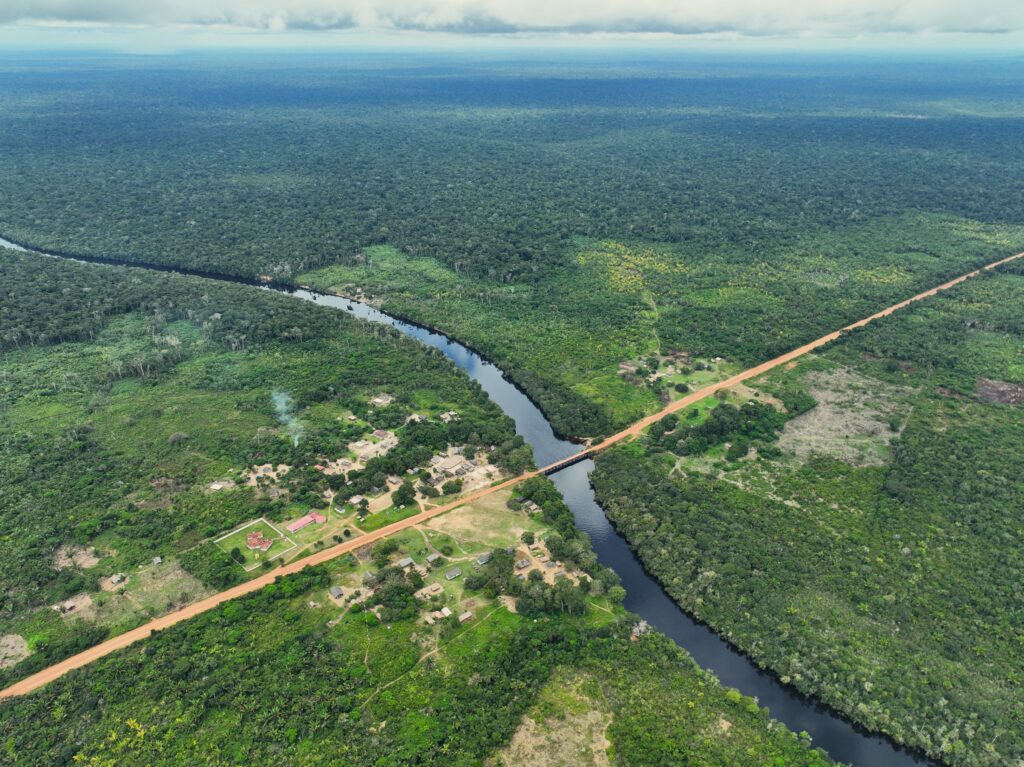
At the time, the Tenharim and the Arara and Gavião indigenous peoples from the Igarapé Lourdes IT protested against the executive order and launched a joint statement opposing it. In addition to warning about the imminent impact on their territories, the document already mentioned that “another major concern” was related to “uncontacted indigenous peoples who live between the headwaters of the Marmelos River and the Preto River.”
Also in 2012, the General Coordination for Uncontacted and Recently Contacted Indigenous Peoples (CGIIRC), a Funai branch, sent a memorandum to the companies in charge of the project about the need to complete studies on uncontacted groups. The agency expressed “great concern” about the environmental impacts that “directly affect the conditions necessary for the physical and cultural reproduction of these uncontacted indigenous peoples.”
Nevertheless, in the term of reference sent to Ibama, Funai said that Tenharim Marmelos was the only Indigenous Territory affected, but pointed out that “if the existence of uncontacted indigenous people in this area is confirmed, appropriate measures must be taken to guarantee that they can make full use of their territories.”
Looking for uncontacted indigenous peoples
InfoAmazonia and Brasil de Fato visited the Tenharim Marmelos IT in December 2023. Experts interviewed are concerned about weak conditions of those uncontacted groups who live in the area without the evidence having been officially confirmed by Funai. During our visit, the Territorial and Environmental Management Protocol (PGTA) prepared by the Association of the Tenharim Morõguitá Indigenous People (Apitem) in partnership with the IIEB was validated. They discussed these populations’ safety as well as their rights. The meeting issued a statement.
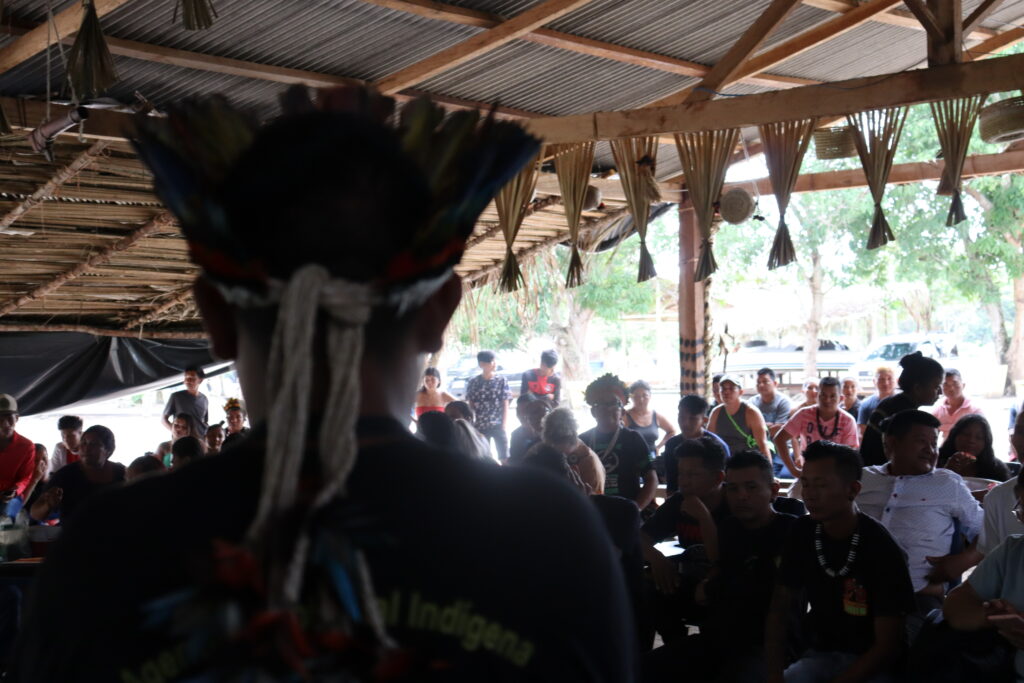
One of the points addressed in the statement is the creation of an Ethno-Environmental Protection Front (EPF) in Humaitá under Funai’s Regional Coordination to monitor and protect recently contacted groups. “We want this to be taken into consideration not just because of the dam but also because we know they exist,” says Apitem coordinator Daiane Tenharim.
According to anthropologist Karen Shiratori, effective protection of these indigenous people is impossible since the Purus/Madeira EPF monitoring area, which covers seven municipalities in Amazonas and three in Rondônia, includes a vast territorial extension. She advocates the creation of a new Funai front operating in southern Amazonas. “It’s impossible to monitor and locate these groups and protect their territories, their territorial rights and their integrity. This area has become very marginalized and there has been little research and localization work recently.”
We want this to be taken into consideration not just because of the dam but also because we know they exist.
Daiane Tenharim, Apitem coordinator
Considering that uncontacted indigenous peoples are “refugee groups, survivors of historical genocide processes,” indigenous expert Daniel Cangussu points out that the construction of the dam on the Machado River “is a coup de grace” to their existence. Cangussu is a Funai servant at the Purus/Madeira EPF, which monitors and protects uncontacted peoples under the Regional Coordination (RC) of Lábrea, Amazonas. He says that the project “might end any possibility for these groups to be located and resist.”
In 2016, the Madeira/Purus EPF carried out an expedition along the Preto river in the Tenharim Marmelos IT. We had exclusive access to reports prepared between 2013 and 2016 that indicate the presence of uncontacted indigenous people in the territory. The 2016 documents point out that the signs found up to that point indicate the presence of a group of uncontacted indigenous people circulating in the territory and recommend new efforts in the southern area, where some Tenharim used to live before they had contact with non-indigenous people. “This investigation process must continue by carrying out new land expeditions,” the report concludes.
Cangussu participated in Funai expeditions in the Tenharim Marmelos IT to find signs of these isolated groups. He worked with chief Manoel Duca Tenharim, who learned to move in the forest from his father and is proud of traveling the entire length of the territory on foot. “I’m a woodsman. I grew up in the woods,” he told us several times. “We go there and monitor where our uncontacted relatives are. Between here and there, it’s danger caused by this hydroelectric network that will reach them [uncontacted peoples] and will reach our river,” he points out.
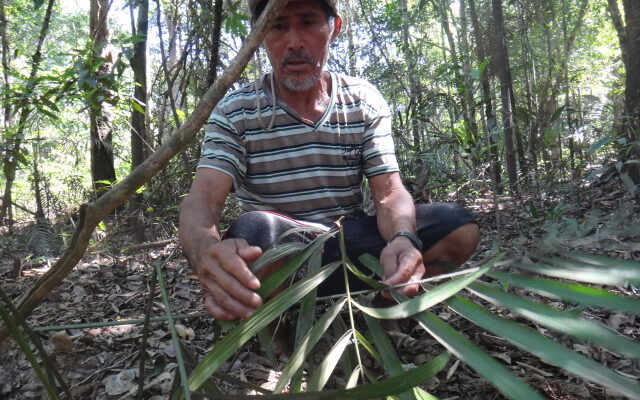
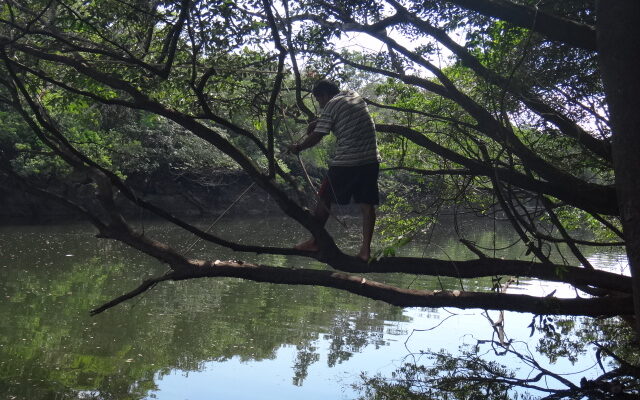
His knowledge of the forest and his interactions with uncontacted groups during his travels led to Duca being invited to participate in Funai expeditions in the Tenharim Marmelos IT. The first one took place in 2013, when the team traveled along the Marmelos River towards its headwaters. “We saw everything – where our relatives used to go, where they fished; we saw where they got honey, where they burned wood to get honey. Everything indicated that our relatives existed,” the indigenous man says.
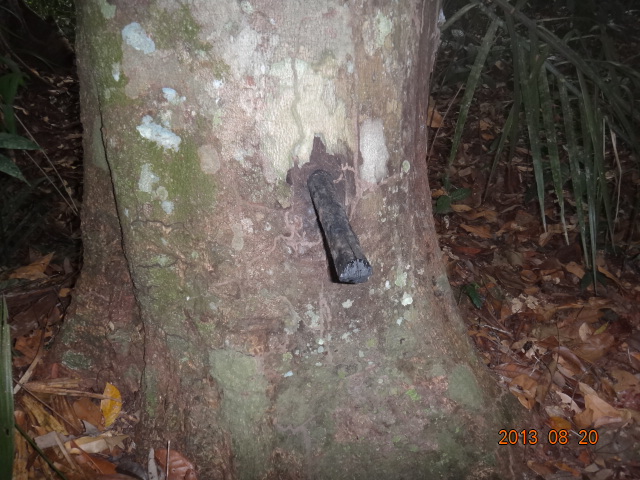
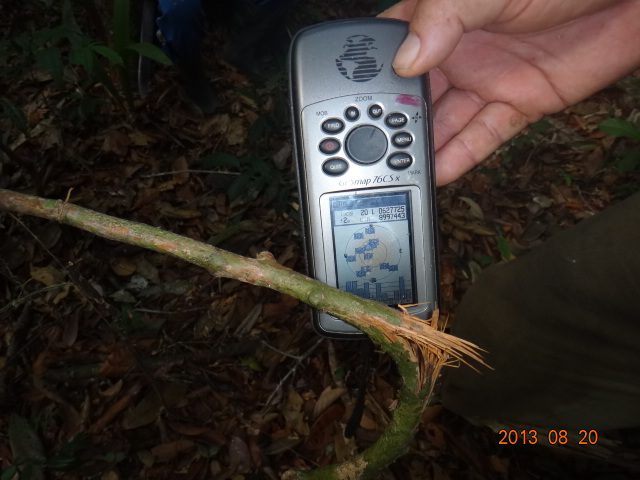
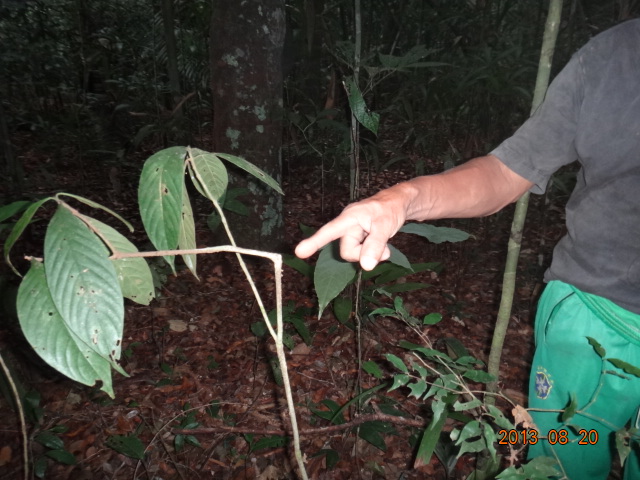
Impact study rejected
In 2017, a year after the end of these Funai expeditions, during the administration of former President Michel Temer (MDB), the first version of Tabajara’s EIA was completed and submitted to Ibama. Brazil’s 2026 Ten-Year Energy Expansion Plan published that year by the Ministry of Mines and Energy estimated that the dam could start operating in 2024.
The EIA was rejected by Ibama because it did not cover a series of items. Resubmitted later that year, it was rejected again due to incorrect projections about the reservoir. Following the submission of this first version of the document, the Federal Prosecution Service and the Rondônia State Prosecution Service began an analysis of the impacts of the Tabajara dam based on technical reports and started making recommendations for adjustments to studies on the dam. Therefore, in 2018, the two agencies recommended to Ibama and Funai not to grant the provisional license: The environmental licensing procedure comprises three stages: provisional license; installation license; and operating license. The provisional license is the preliminary planning stage of the enterprise or activity, when its location and general design are approved. due to the “risk of genocide” against groups of uncontacted indigenous people who circulate in the Tenharim Marmelos IT.
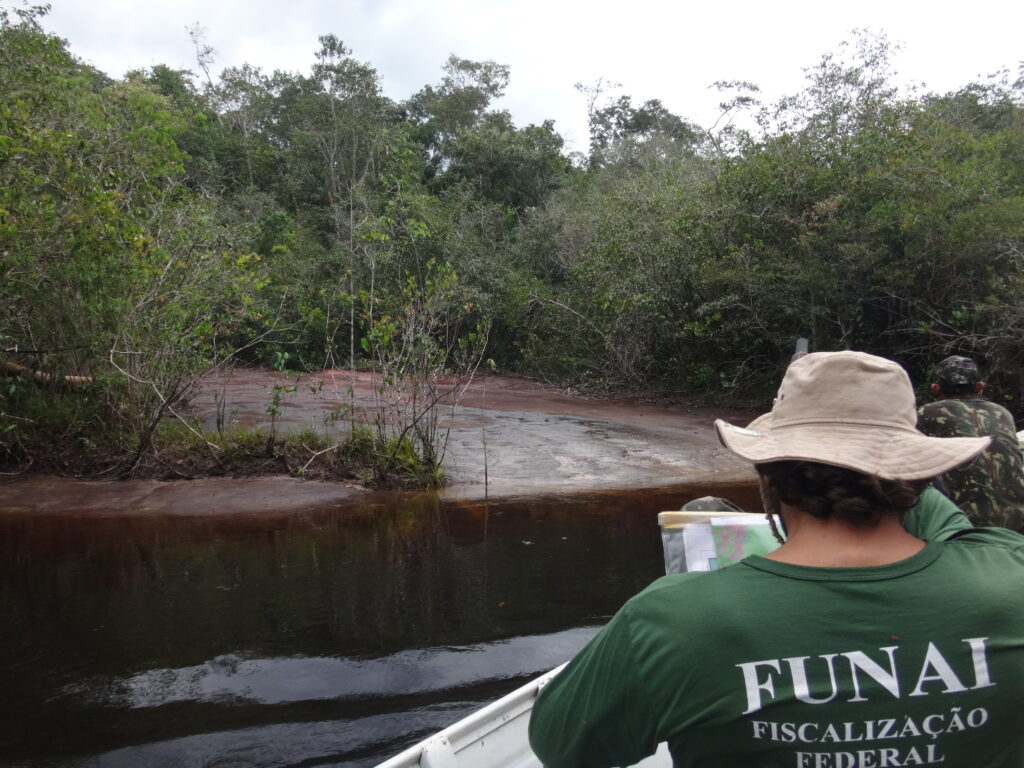
“Uncontacted indigenous groups need their roaming area to be ecologically balanced and protected from external factors to guarantee their independent subsistence and even avoid diseases that are exogenous to their immune system. The agencies point to the risk of genocide if these uncontacted groups do not have the necessary protection of their territories,” says an excerpt from the document sent by the Federal and State Prosecution Services.
The recommendation was based on a 2017 technical report signed by Rebecca de Campos Ferreira, an anthropologist working with the Federal Prosecution Service on lawsuits related to traditional peoples’ rights. In the document, she points out that no technical or scientific criteria justify setting the standard delimitation of 25 miles to reduce impacts and that it is rather based on “related political motives.” The boundary was set on the EIA of the Tabajara dam, which considered the Tenharim Marmelos as the only indigenous territory affected but ignored that uncontacted people circulated there.
According to Ferreira’s anthropological report, it is “evident” that the Tabajara dam will affect all ITs in the area — not just Tenharim Marmelos — and that “it will affect uncontacted indigenous people in even crueler ways.” “Direct and indirect impacts might be felt even hundreds of miles away, especially when considering groups in extremely vulnerable situations such as those who have not made contact with the surrounding society.”
The EIA was finished in 2019, during the Jair Bolsonaro administration. ICMBio granted the project an environmental license in 2020, but the study was rejected again in 2021 after technical analysis by the Coordination for Environmental Licensing of Hydroelectric Power Plants (Cohid), linked to Ibama. The technical report points out that “weaknesses, inconsistencies, scientific informality, and lack of information” found in the EIA and also in the complements to the study requested by Ibama “do not support a favorable decision regarding the feasibility of the project.”
Finally, in April 2021, after the Cohid report, Federal and State Prosecutors filed the public civil action that led to the first Federal Court decision the following year, ordering the inclusion the other seven indigenous territories in the impact studies for the dam.
The second decision, signed by Judge Dimis da Costa Braga, reaffirms that the socio-environmental impacts of the dam are not restricted to the river basin or to a limit of 25 miles. According to Judge Braga, due to the context of the migration of workers and speculators to the area, the circumstances “increase the risks of land conflicts and encourage deforestation and encroaching in indigenous lands.”
The Tenharim’s relations with uncontacted groups
In addition to remembering the condition of living without contact with non-indigenous people, the Tenharim recall the time when some Kagwahiva groups dispersed and began to live in isolation. “We don’t even refer to them as indigenous people but rather as our relatives. When we had this contact with non-indigenous people, part of our group went far from here; they just broke away. We stayed on one side and this group followed another path,” explains Daiane Tenharim.
The contact of the Tenharim with non-indigenous peoples dates back to the 1940s’ rubber cycle, including the construction of the Trans-Amazonian road (BR-230), opened in 1974, and the mining activity that followed. These were traumatic processes marked by extreme violence, deaths and the dispersion of some groups that began to live in isolation.
Karen Shiratori points to this process as “some kind of end-of-the-world” for Kagwahiva groups, in which social ties are permanently severed. “When they can have preserved areas as havens, refusing contact is the resistance strategy adopted by many people who prefer to be isolated and break these social, kinship, ritual and ecological relations with that territory. And they go away.”
Since this is a recent process, she points out that the Tenharim remember some of these indigenous people who sought isolation. “The references are related to the place where that group used to live or their leaders, or the heads of families. It’s interesting to see how detailed their memory of that process of social disruption is,” the researcher explains.
This story is the result of training carried out by InfoAmazonia as part of the Together for Conservation project, implemented by Internews in alliance with USAID and WCS. The content is under the responsibility of InfoAmazonia and Internews and does not necessarily reflect the views of WCS, USAID, or the United States government.


